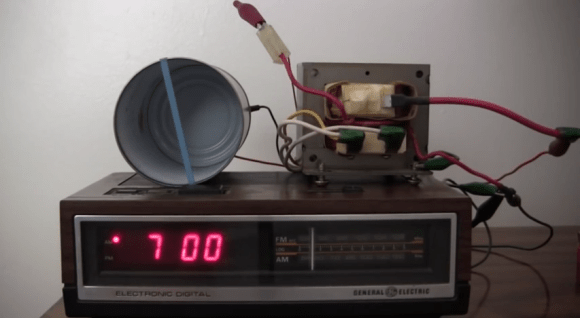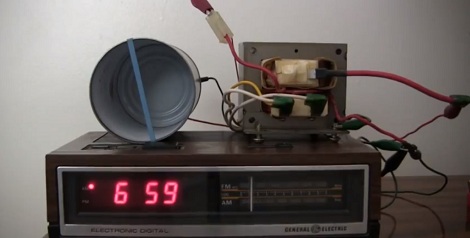 Let’s face it: most of us have trouble getting out of bed. Many times it’s because the alarm isn’t loud enough to rouse us from our viking dreams. [RimstarOrg]’s homeowner’s association won’t let him keep a rooster in the backyard, so he fashioned a piezoelectric crystal speaker to pump up the volume.
Let’s face it: most of us have trouble getting out of bed. Many times it’s because the alarm isn’t loud enough to rouse us from our viking dreams. [RimstarOrg]’s homeowner’s association won’t let him keep a rooster in the backyard, so he fashioned a piezoelectric crystal speaker to pump up the volume.
[RimstarOrg]’s speaker uses a Rochelle salt crystal strapped to a bean can diaphragm. In his demonstration, he begins by connecting an old clock radio directly to the crystal. This isn’t very loud at all, so he adds a doorbell transformer in reverse. This is louder, but it still won’t get [RimstarOrg] out of bed.
Enter the microwave oven transformer. Now it’s sufficiently loud, though it’s no fire bell alarm. He also demonstrates the speaker using a piezo igniter from one of those long barbecue lighters and a crystal radio earpiece. As always, the video is after the jump. [RimstarOrg] has a lot of relevant linkage in the summary so you can learn how to grow your own Rochelle crystals.
Continue reading “Piezoelectric Crystal Speaker For Clock Radio Is Alarmingly Easy To Make”












